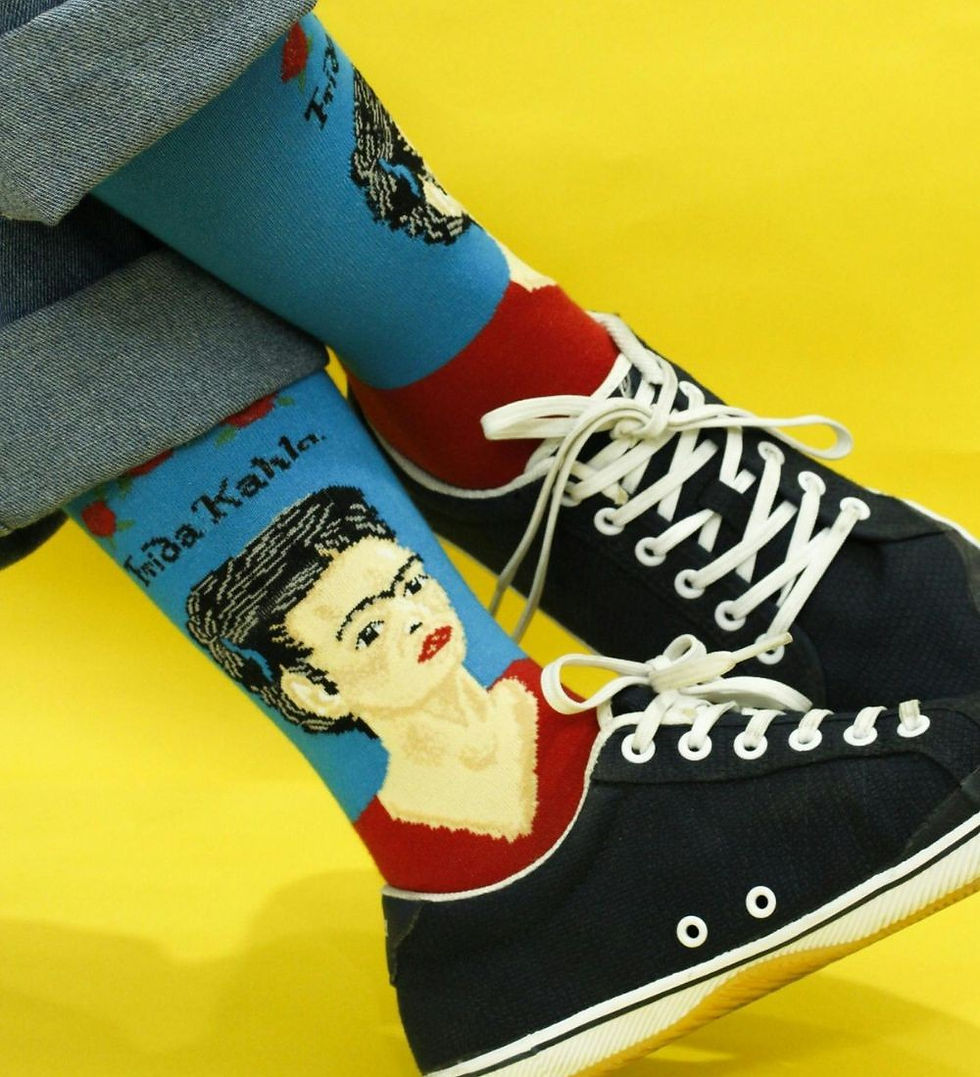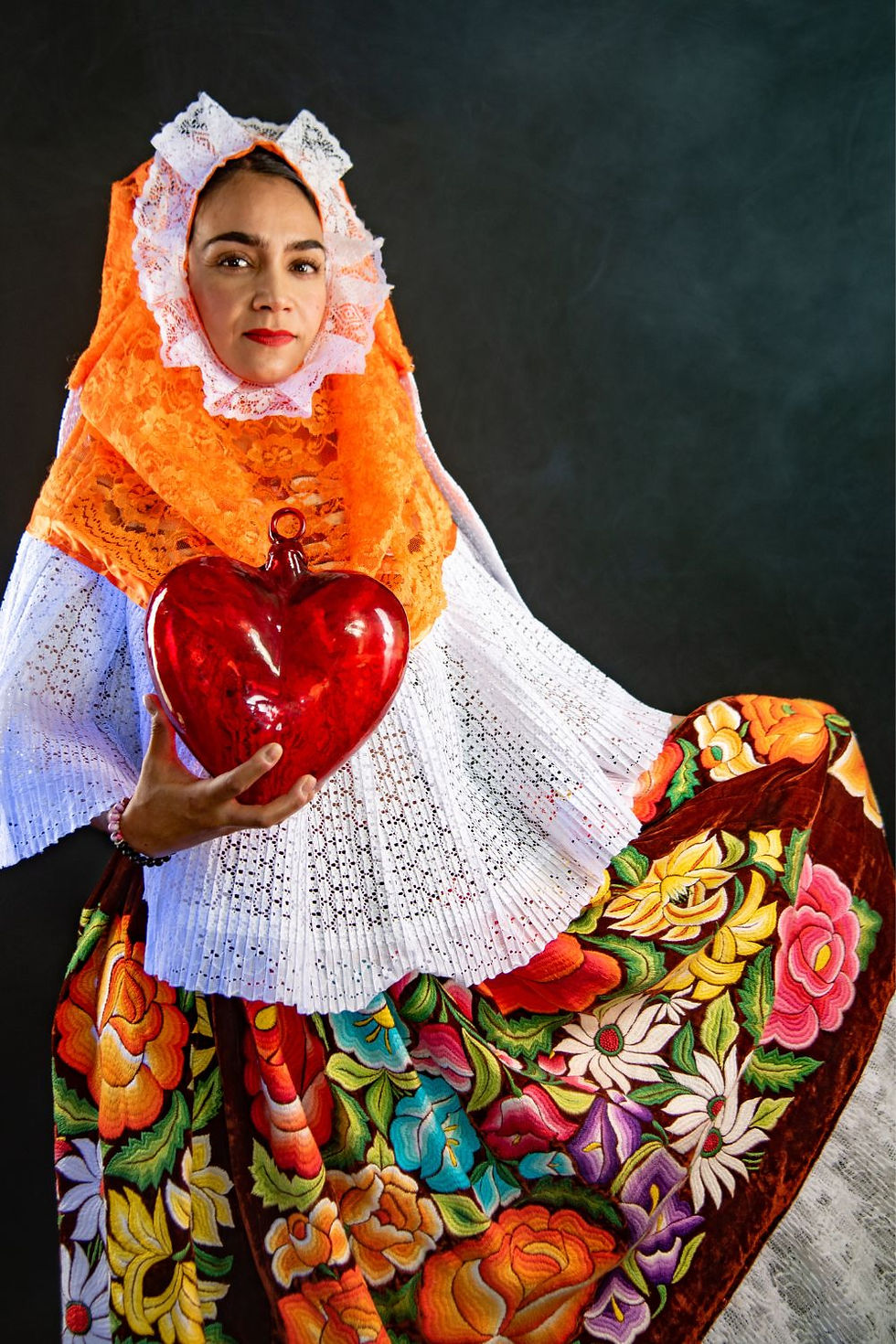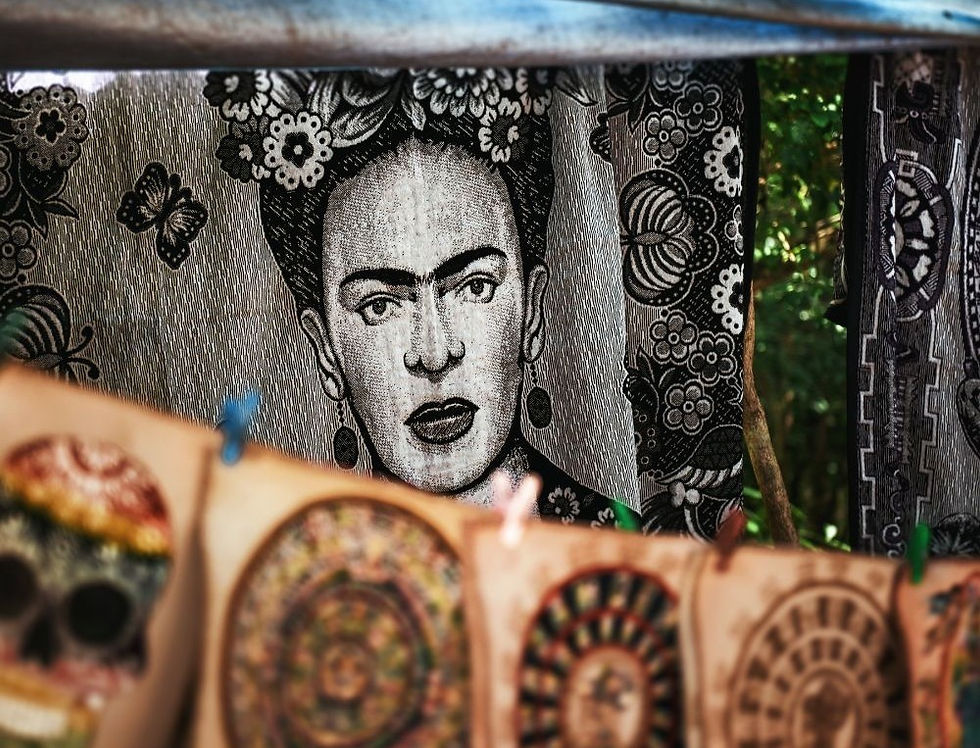Frida Kahlo Beyond the Surface: Teaching Spanish with Cultural Depth
- Spanish Learning Edge

- Jul 7
- 3 min read
Updated: Aug 3
🌿 Bring this blog to life: |
Happy belated birthday, Frida…

The first time I learned about Frida Kahlo as a multidimensional person was through words, not paintings or souvenir merchandise. I had seen her face on mugs and t-shirts—those unmistakable eyebrows, that flower crown—and heard how talented of an artist she was, how political, how controversial. But it wasn't until I read Frida: A Biography of Frida Kahlo by Hayden Herrera that I began to truly admire the woman behind the image. The artist behind surreal, emotionally charged paintings suddenly became, for me, a symbol of resilience and deep, embodied strength.
One sentence from her boyfriend Alejandro Gómez Arias's account of her traumatic 1925 bus accident still echoes in my mind: "When people saw her they cried, 'La bailarina, la bailarina!' With the gold on her red, bloody body, they thought she was a dancer" (Herrera 47). This haunting image—Frida's broken body covered in powdered gold from a fellow passenger’s art supplies—captures something essential about her legacy and life. She was an incomprehensible paradox, seen as something both beautiful and chaotic.

Understanding Frida means placing her in her historical context. She aligned herself with the post-revolutionary Mexicayotl movement, embracing traditional Tehuana clothing as an act of cultural affirmation and political defiance. It was not costume—for her, it was resistance. Frida’s legacy is also a legal and commercial battlefield. The Frida Kahlo Corporation, based outside of Mexico, holds the rights to her name and image, often restricting access by family members and artisans. In a twist of irony, the image of a woman who openly expressed her discontent with capitalism is now tightly controlled by it.
Kahlo is everywhere. She's a brand. In Mexico and abroad, you can find her face on journals, makeup lines, tequila bottles, sneakers, and even a Barbie doll. Some sources suggest that Frida Kahlo’s popularity was shaped by Chicana and feminist communities in the U.S. during the 1970s and 80s, who saw in Frida a mirror of cultural struggle and strength (Thackara). From there, the "Fridamania" returned to Mexico with global momentum.

Her image can be seen from murals in Coyoacán to mass Halloween costumes. Her face printed on stickers and keychains is festive, defiant—but many times emptied of historical or political context. Critics call this distortion. But there’s another side to the story: such global fascination has made Frida visible. She is now recognized in classrooms worldwide, celebrated in cultural festivals, and referenced by young people who may never have entered a museum (Barragán; Kahlo). Frida has become an entry point for global audiences to explore Mexican identity, feminism, and resilience. That matters too.
Even her Hollywood story is layered with struggle. The 2002 film Frida, directed by Julie Taymor and starring Salma Hayek, brought her life to a global audience. But years later, Hayek revealed in The New York Times that portraying Frida meant enduring pressure, trauma, and harassment at the hands of producer Harvey Weinstein. She described making the film as a personal battle—one that eerily echoed the themes of resilience, exploitation, and silence that marked Frida’s own life (Hayek).

As educators, we can teach our students to honor and highlight all these nuances that make her human. She needs to be at the center of thought-provoking questions because teaching Frida Kahlo means inviting complexity into the classroom. It’s a chance to question who is remembered and how, to challenge simplified narratives, and to connect language learning with their socio-cultural context.
And I admit it—I own a Frida tote. I’ve googled Frida’s Barbie and secretly wish I had it. I am fascinated by her contradictions and can’t fathom how such a fierce personality could flourish and shine while being restrained by corsets and discomfort. But, despite my capitalist desire to collect Frida’s items, I also understand we need to go beyond the surface. Frida is not just an icon—she remains a mighty force for discussing the grit of survival, the weight of political conviction, and the power of women who challenge and disrupt norms and gender stereotypes.

© Spanish Learning Edge. Angélica García Genel, Editor.
🌿 Bring this blog to life: |
References
Barragán, Almudena. “La muerte de Frida Kahlo, el nacimiento de un icono pop.” El País, 13 July 2017.
Hayek, Salma. “Harvey Weinstein Is My Monster Too.” The New York Times, 12 Dec. 2017.
Herrera, Hayden. Frida: A Biography of Frida Kahlo. Harper Perennial, 2002.
Kahlo, Cristina. “Una mirada a Frida Kahlo como ícono global.” Google Arts & Culture.
Thackara, Tess. “How Frida Kahlo Became a Global Brand.” Artsy, 19 Dec. 2017.
Images
Created using Canva.com



